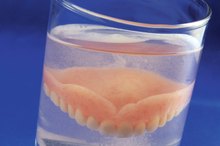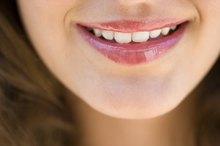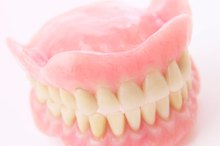What Can't You Eat After Having Your Dental Sealants Placed?
Dental sealants are a relatively new form of preventive dental treatment, becoming widespread only in the last years of the 20th century. Like fluoridation, they are intended to improve dental health by making cavities less common, even in children who don't adhere to the basic standards of good dental hygiene. Sealants are durable, but some foods can shorten their lifespan 3.
About Dental Sealants
Dental sealants are used primarily to protect the molars, which contain pits and crevices that are difficult to clean even with diligent tooth brushing and proper dental hygiene. The dentist cleans each molar in turn and etches it with a gentle acid to provide the sealant with a surface it can adhere to. Then the sealant itself, a liquid plastic, can be painted on. Special lights are used to harden the plastic, at which point the procedure is complete. The patient can eat immediately after the application of the sealant, with no ill effects.
- Dental sealants are used primarily to protect the molars, which contain pits and crevices that are difficult to clean even with diligent tooth brushing and proper dental hygiene.
When to Apply
What Is the Difference Between Dental Bonding & Veneers?
Learn More
Dental sealants can be applied to a sound molar at any age, but the most advantageous time is when the molars first grow in, at approximately six and twelve years of age. Sealing them while they're still new and in pristine condition ensures the teeth will remain in the best possible condition throughout the childhood years, when decay is most likely. The sealant can last up to 10 years, though three to four years is more common. The dentist will routinely check the teeth during each checkup, and reapply sealant as necessary.
- Dental sealants can be applied to a sound molar at any age, but the most advantageous time is when the molars first grow in, at approximately six and twelve years of age.
Eating With Sealants
Sealants may take a day or two to conform completely to the shape of the tooth, but once they've done so the treated teeth feel no different from any other. Your children will be able to eat normally as soon as the sealant has hardened. A small amount of surplus plastic may wear off during the first day or two, but this is normal and not a sign that the sealant has failed to "take." Although sealants don't require any change in diet, regular consumption of some foods may shorten their functional life span.
- Sealants may take a day or two to conform completely to the shape of the tooth, but once they've done so the treated teeth feel no different from any other.
Foods to Avoid
How Can I Remove Stains From Ceramic Braces?
Learn More
In general, the only foods to avoid or limit are those that are especially hard, sticky or chewy. Ice cubes, licorice, jawbreakers and other hard candies, for example, are unusually hard and crunching on one can abrade the sealant very quickly. Fruit snacks, caramels, gummy bears and sticky toffee cause problems by pulling on the sealant, as your child's jaws open and close while chewing. It's not necessary to avoid these treats completely, but access to them should be limited. Fortuitously, these are all foods that are high in sugar and tend to promote tooth decay, so a sealant provides a useful excuse to restrict them.
- In general, the only foods to avoid or limit are those that are especially hard, sticky or chewy.
- Ice cubes, licorice, jawbreakers and other hard candies, for example, are unusually hard and crunching on one can abrade the sealant very quickly.
Related Articles
References
Writer Bio
Fred Decker is a trained chef and certified food-safety trainer. Decker wrote for the Saint John, New Brunswick Telegraph-Journal, and has been published in Canada's Hospitality and Foodservice magazine. He's held positions selling computers, insurance and mutual funds, and was educated at Memorial University of Newfoundland and the Northern Alberta Institute of Technology.









